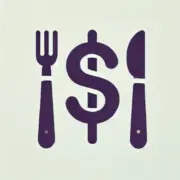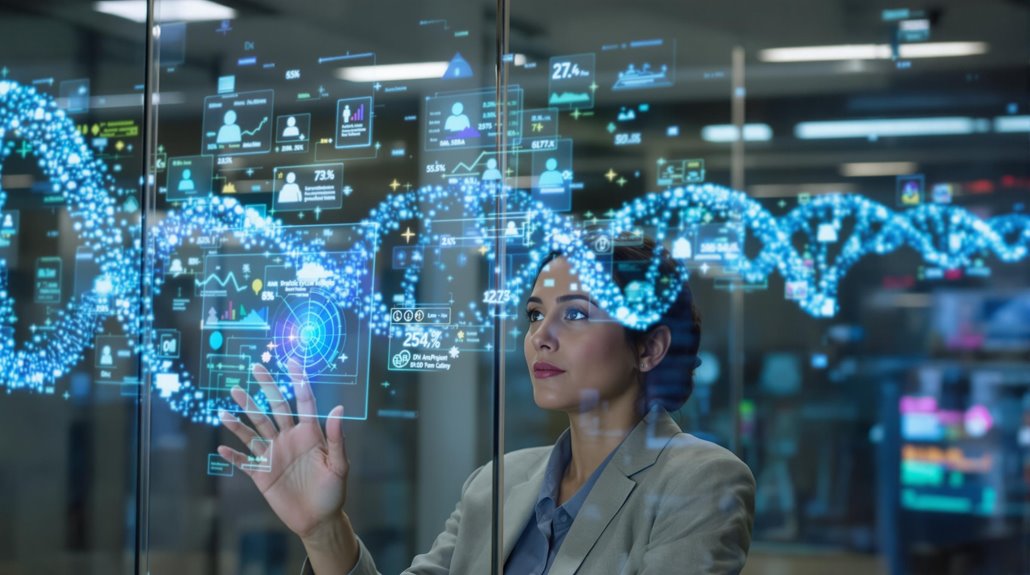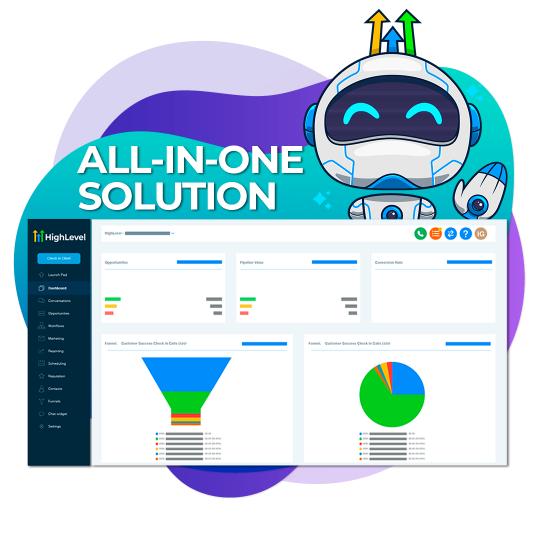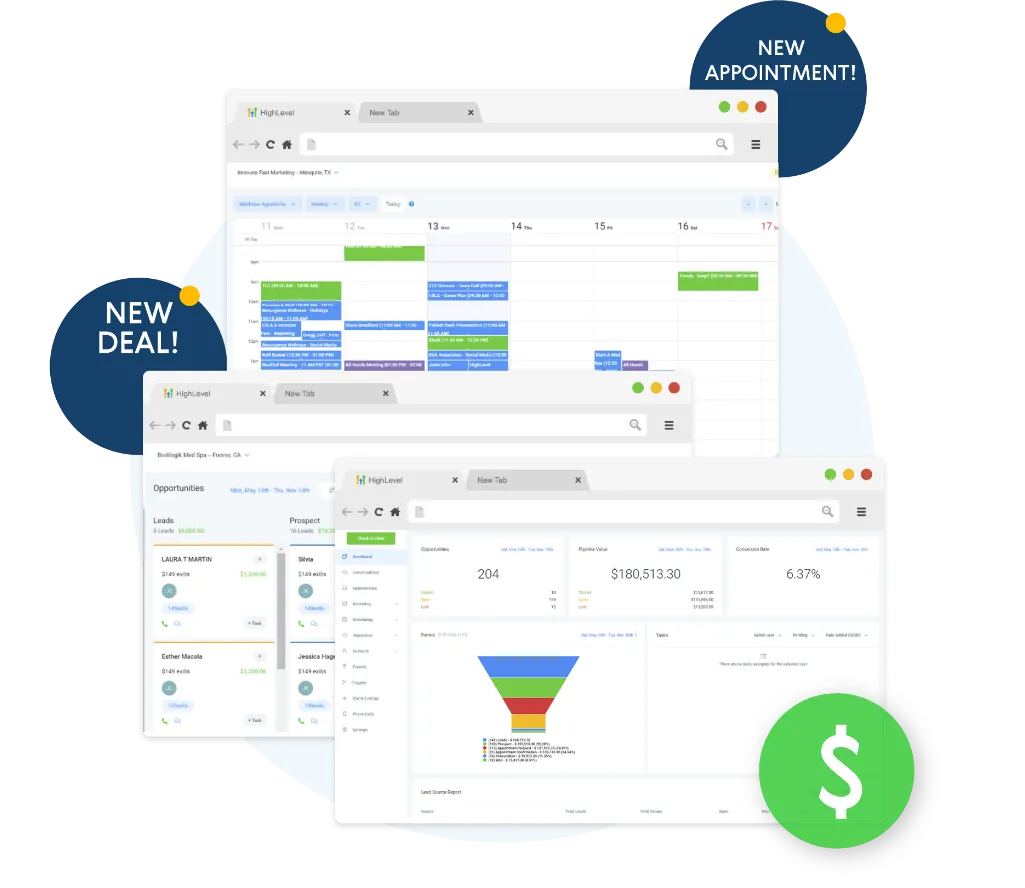Your customer records help you understand what people want before they ask. Think of it like a crystal ball that looks at what customers bought before and when they like to shop. When you know these patterns, you can make each person feel special. Happy customers spend more money – up to 25% more! They also help your business grow by 10-15%. Instead of waiting for customers to tell you what they need, you can reach out first with ideas they'll love. This makes them want to keep coming back to your store.
Feeling overwhelmed by missed leads and disorganized workflows?
Discover the award-winning platform that automates follow-ups, tracks every lead, and keeps your business running smoothly—all in one place. Thousands of businesses are already transforming their sales and marketing with this trusted solution. Don’t miss out—start your 14-day free trial today and click now to uncover exclusive, limited-time special offers!
The Power of Predictive Analytics
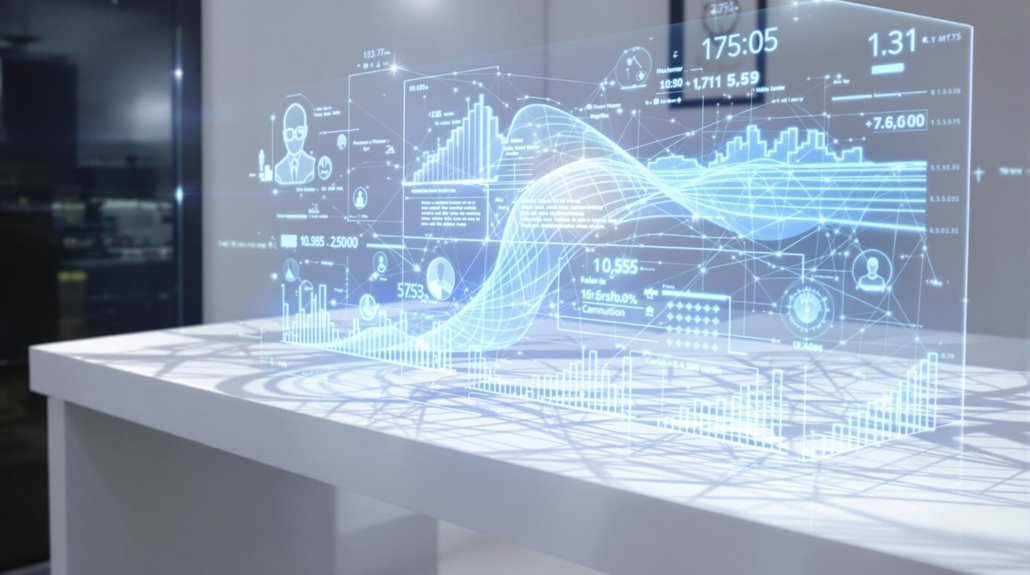
Predictive analytics helps businesses understand what customers want and need. Think of it like a crystal ball that looks at past information to see what might happen next. It takes all the little pieces of customer data and finds hidden clues about what people like.
Just like weather forecasts help us know if it will rain, predictive tools help businesses know what customers might do. They look at things like what people buy, when they shop, and how happy they are. This helps stores and companies make smart choices about how to treat their customers better.
These smart tools work with other computer systems to spot patterns. They can tell when a customer might stop buying or when they're ready to buy more. This means businesses can fix problems early and make customers happy.
They can also send the right messages at the right time to keep customers coming back.
Understanding Customer Behavior Patterns
We want to know how our customers think and act. There are four main things we look at:
- Who they are
- What they like
- What they do
- What they buy
We learn about customers in two ways. First, we look at big groups to see what most people do. Then, we talk to them one-on-one to learn how they feel.
New computer tools help us make sense of all this info. They show us what customers might do next and who needs help. They also let us give each person what they want.
When stores use these tools well, they sell more. One shop in Australia used what they learned about their customers to make twice as much money.
Ready to simplify your business operations?
Streamline your workflows and boost productivity with a CRM designed to save you time and effort. From tracking leads to automating follow-ups, this platform does it all. Discover what’s possible—learn more about how it works and see why so many businesses rely on it every day.
Building Smart Segmentation Strategies

We track how each customer moves through their journey with us. We look at what they like and how they make choices when using our service.
We then put customers who act alike into small groups. These groups change as customers change what they do. This helps us understand them better and give them what they need.
We can see what they do now while also knowing what they did before. This makes it easy to plan how to help them.
Personalized Journey Mapping Analysis
We make better customer journeys by listening to what people tell us. We look at what they like and don't like. We ask them questions and talk to our sales team.
Let's start simple. First, we look at how people use our stuff right now. Then we learn more about them – where they live, what they buy, and what they do. This helps us give each person what they want.
We keep watching how people act. When they do something new, we change how we talk to them. We also check if what we're doing works well. If not, we fix it to make people happy.
Just like making a new friend, we learn more about each person over time. This way, we can give them exactly what they need, when they need it.
Dynamic Behavior-Based Clustering
We group customers by watching what they do right now. This helps us know them better. Think of it like sorting candy into different jars – each jar has candy that's alike.
We look at how people shop and what they buy. Special computer tools help us sort through all this info. As people change how they shop, we change how we group them.
To make this work, we need good tools to study the data. We also need to test our ideas first. Store teams and computer experts must work together.
When we do this right, we can:
- Send better ads to the right people
- Keep the right items in our stores
- Make shopping fun for everyone
Still struggling to keep your business organized?
Take the guesswork out of managing leads and follow-ups with a platform trusted by thousands of businesses. Say goodbye to missed opportunities and hello to a seamless sales process. Act now—try it free for 14 days and discover how easy it is to stay on top of your workflow. Don’t wait—exclusive offers won’t last long!
Beyond Traditional Loyalty Programs
Smart rewards make people happy and spend more. When members get special treats just for them, they spend about 25% more money than with regular rewards.
Smart computer tools help stores know what their loyal customers want before they ask. The tools watch what people like to buy and give them special deals on those things. This makes more people join and use loyalty programs.
Personalized Rewards Drive Growth
Rewards that feel special make companies grow better. When you get rewards that fit what you like, you spend more money at those stores. In fact, when stores send you deals just for you, it makes you want to shop there more.
Think of it like a friend who knows what you like. Stores can learn about what you buy and give you fun rewards. They can give you points for telling friends about the store or writing what you think about the stuff you bought.
Some people like to get rewards that help the earth. Others like to play games to earn rewards. The key is that good rewards make people happy and want to come back again and again.
When stores get this right, they can make 10-15% more money. This is because people love it when a store knows them well. About 3 out of 4 people will buy more stuff when they get special deals made just for them.
Predictive Member Spending Patterns
We want to know how our members spend their money so we can help them better. Our computer tools look at what people bought before to guess what they might want next. It's like knowing your friend loves ice cream, so you can tell when they'll want some!
These tools help us spot when people like to shop and what they like to buy. We can then send them deals on things they care about at the right time. Think of it like having a friend who knows just what you want for your birthday.
We keep watching what our members buy and change our deals to match. This way, we stay close to what they want and need. It's like having a store that learns what you love and always has it ready for you.
AI-Powered Engagement Optimization
Smart computers help make rewards programs better for you. When you shop or visit places, these computers learn what you like. They help pick special treats just for you.
The computers watch how you use your rewards and make sure you get the best deals. When you need help, friendly robot helpers can talk to you right away. They listen to what you say online to know how to serve you better.
You get tips about things you might want to buy based on what you already like. The computers also keep your rewards safe from bad people who might try to steal them.
This makes the whole program work better for you.
Real-Time Customer Engagement
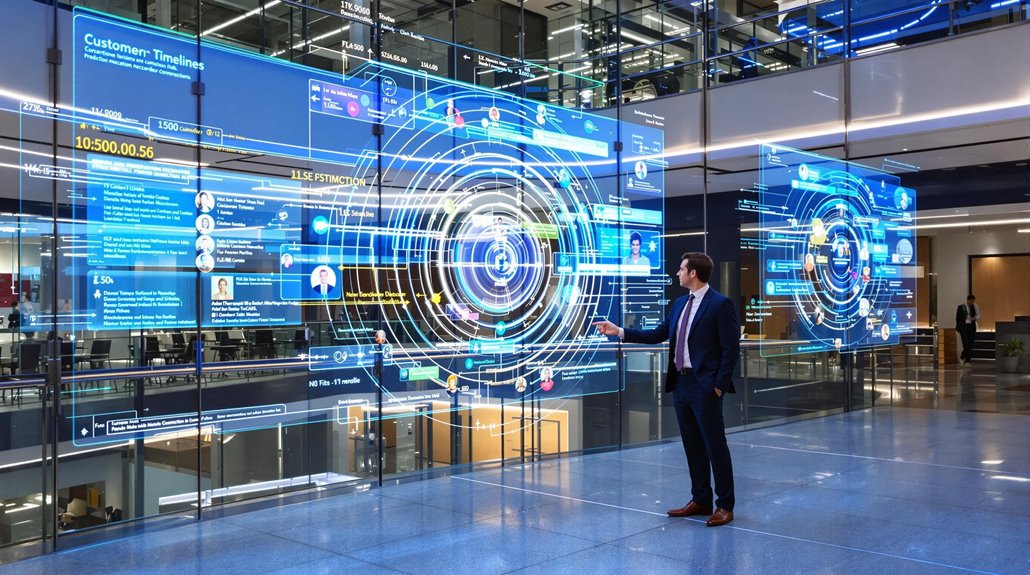
Talking to customers right when they need help makes them happy and helps your business grow. When you add simple tools like chat boxes on your website, more people buy things. Live videos also bring more visitors to your site.
Smart computer tools can help you talk to customers better. These tools work on phones, computers, and tablets to make each customer feel special. Many people like websites that let them chat with real people. They often come back to those sites to shop more.
Think of it like having a friendly helper in a store. When people get help fast, they feel good and want to come back.
Struggling to keep up with your growing business?
Simplify your processes and stay ahead with a CRM that adapts to your needs. Manage leads, automate tasks, and focus on what matters most—growing your business. Take the first step—explore the features today and see how it can transform the way you work.
Data-Driven Decision Making
We need data to make good choices for our business. When we look at what our customers tell us and what they buy, we learn what they want. This helps us serve them better.
Our tools show us what customers need right now. They also help us guess what customers will want next. When we use these tools well, we make smart choices that help our business grow. We also stay away from bad choices that could hurt us.
Things change fast. What works today may not work next week. So we must always watch what our customers do and want. This helps us make better plans for our business.
Conclusion
We use data to help our customers before they need help. Think of it like knowing what your friend wants before they say it. When we look at customer information, we learn what they might want next. This lets us be ready with good answers. We aim to help, not push things on people. Being helpful means being kind and careful with what we know about our customers.
